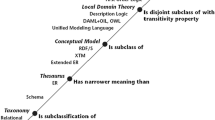Abstract
How to organize crossing social network resources on a higher level of integration and address them to users’ desktops is an important difficult problem. Especially, there is a lack of efficient approaches to software architecture to build reusable system over the crossing social network. From the viewpoint of temporal logic XYZ/E, this paper proposes a kind of Architecture Description Language about the Crossing Social Network system (CSN_ADL), which can be used to depict the main key processes over the cross-social network system, and formally defines some key concepts, such as relation component, corelation component, override corelation connector, interaction connector, corelation network-oriented architecture, as well as system correctness, system activity, and system safety. Furthermore, some properties of correctness, activity, and safety under the frame CSN_ADL is discussed and depicted formally, which provides a formally theoretical instruction for architecture reuses.
Similar content being viewed by others
References
Ofcom. Social networking: A quantitative and qualitative research report into attitudes, behaviours, and use [EB/OL]. [2011-04-20]. http://www.ofcom.org.uk/advice/media_literacy/medlipub/socialnetworking/report.pdf.
Xiao Ruliang, Xiong Jinbo. An Interest-Based Recommending Framework of Folksonomies [C]//IEEE ISA2009. Washington D C: IEEE Computer Society, 2009, 5: 1–3.
Kim J T, Lee J H, Lee H K, et al. Provision of the personalized social network service based on the locality/sociality relations [C]//Proceedings of the 2009 Fourth International Conference on Internet and Web Applications and Services. Washington D C: IEEE Computer Society, 2009: 235–238.
Mei Hong, Shen Junrong. Progress of research on software architecture [J]. Journal of Software, 2006, 17(6): 1257–1275(Ch).
Tang Z S. Temporal Logic Programming and Software Engineering [M]. Beijing: Science Press, 2002 ( Ch).
Zhu X Y, Tang Z S. A temporal logic-based software architecture description language XYZ/ADL [J]. Journal of Software, 2003, 14(4): 713–720(Ch).
Shaw M, DeLine R, Klein D V, et al. Abstractions for software architecture and tools to support them [J]. IEEE Trans on Software Engineering, 1995, 21(4): 314–355.
Medvidovic N, Mehta N R, Mikic-Rakic M. A family of software architecture implementation frameworks [C]//Proc of the 3rd IEEE/IFIP Conf on Software Architecture. Deventer: Kluwer BV Press, 2003: 221–235.
Allen R, Douence R, Garlan D. Specifying and analyzing dynamic software architectures [C]//Proceedings of the 1998 Conference on Fundamental Approaches to Software Engineering (LNCS 1382). New York: Springer-Verlag, 1998: 21–37.
Magee J, Kramer J. Dynamic structure in software architectures [C]//Proc of the ACM SIGSOFT Symp on Foundations of Software Engineering. New York: ACM Press, 1996: 3–14.
Mei H, Chen F, Wang Q X, et al. ABC/ADL: An ADL supporting component composition [C]//Proceedings of 4th International Conference on Formal Engineering Methods (LNCS 2495). New York: Springer-Verlag, 2002: 38–47.
Ni Youcong, Ying Shi, Zhang Linlin, et al. Aspect-oriented architecture description language based on temporal logic [J]. Computer Science, 2010, 36(8): 146–162(Ch).
Rao Yuan, Li Zunchao. XYZ/ADL-Based web services architecture description [J]. Systems Engineering-Theory & Practice, 2006, (3): 53–60(Ch).
Guo Liang, Tang Zhisong. An overview towards the semantics of XYZ/E object-oriented programs [J]. Journal of Software, 2003, 14(3): 356–361(Ch).
Oussalah M, Smeda A, Khammaci T. An explicit definition of connectors for component-based software architecture [C]// Proceeding of IFIP International Federation for Information Processing 2007 (LNCS 4468). New York: Springer-Verlag, 2007: 301–316.
Tan Liang, Zhou Mingtian. Security requirements architecture model for large and complex software systems [J]. Computer Science, 2007, (12): 260–265(Ch).
Author information
Authors and Affiliations
Corresponding author
Additional information
Foundation item: Supported by the Fujian Province Science Research Foundation Grant (2009J01272), the Research Fund (type A) (JA09038) from the Education Department of Fujian Province, and the Humanities and Social Science Research Projects of the Ministry of Education (11YJA860028)
Biography: XIAO Ruliang, male, Ph.D., Associate professor, research direction: software engineering and knowledge engineering.
Rights and permissions
About this article
Cite this article
Xiao, R., Ni, Y., Du, X. et al. Formal description of the crossing social network system architecture based on temporal logic. Wuhan Univ. J. Nat. Sci. 16, 525–534 (2011). https://doi.org/10.1007/s11859-011-0792-1
Received:
Published:
Issue Date:
DOI: https://doi.org/10.1007/s11859-011-0792-1




